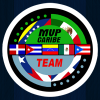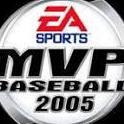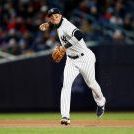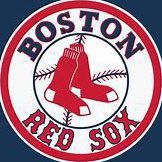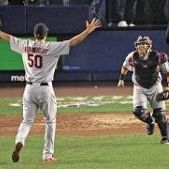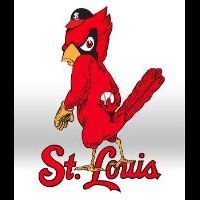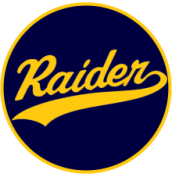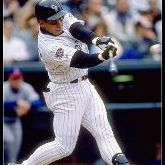-
Posts
26373 -
Joined
-
Days Won
82
Profile Information
-
Member Title
MVPMods.com Historian
Recent Profile Visitors
65196 profile views
Yankee4Life's Achievements

Legend (10/10)
-
The 1974 mod is the next one that I am covering and I am very surprised that I am getting closer to finishing everything up. You can download the 1974 mod right here. I still regret covering these games again because there were some pretty good screen shots and videos that are gone forever but I am happy to have the opportunity to play and talk about these mods. I played the Atlanta Braves, with a nod to Henry Aaron who on April 8th, 1974 broke Babe Ruth’s home run record. Where did fifty years go? Their opponent in this game was the National League East Champion Pittsburgh Pirates. Both teams ended up with the same record in 1974 with a 88 - 74 record. That was good for Pittsburgh to win the division but Atlanta finished fourteen games behind the Dodgers because they won 102 games. Screenshots. Welcome to Total Classics 1974.
-
You are welcome but it to be completely truthful with you it is me who should be thanking you because I learned about a guy (Alejandro Carrasquel) that I never heard of and I learned that he had an impressive career. And while I was familiar with Aparicio and Concepcion I certainly learned a lot from reading about them. Thank you again for telling me about these great Venezuelan ballplayers. I am sure that all the fans down there hold them in high regard.
-
Dave Concepcion It’s called the fall classic, and the 1975 World Series was indeed a “classic.” The Series waged between the Cincinnati Reds and the Boston Red Sox was one of the more memorable championship battles, as a single run decided five of the seven games. Cincinnati shortstop Dave Concepcion entered the Series hoping that the old saying “third time is a charm” would prove true. He had been to two other World Series, losing out both times: first to Baltimore in 1970 and then to Oakland in 1972. In 1975 Boston won Game One at Fenway Park, shutting out the Reds by a 6-0 score, and the Reds were looking to balance the ledger before the Series headed to the Queen City. It was a rainy day in Boston on October 12 for Game Two. But the inclement weather did not hinder Boston starter Bill Lee. He held the Reds to one run and was clinging to a 2-1 lead entering the ninth inning. But after Johnny Bench’s leadoff double chased Lee from the game, Dick Drago and his blazing fastball moved to the hill. After Drago retired Tony Perez on a groundout to shortstop with Bench taking third and George Foster flied to short left field, Concepcion came to bat with two outs and the tying run 90 feet away. Concepcion hit a 1-and-1 fastball into the dirt and the ball bounced high toward second base. Boston’s Denny Doyle raced to his right and backhanded the ball, but it was too late for the second baseman to make a play. Bench scored the tying run, and Concepcion was on first. Red Sox fans in the Fenway Park crowd fell silent. Concepcion stole second base, sliding past the bag but getting back safely. Ken Griffey then doubled him home, and the Reds won 3-2 to even the Series. “I was just looking to make contact,” Concepcion said later. “That’s all you can do in a situation like that against a fastball pitcher like Drago. I knew it was a hit once I got it past the pitcher.” David Ismael (Benitez) Concepcion was born on June 17, 1948, Ocumare de la Costa, Aragua, Venezuela. His father, a truck driver, was against young Dave’s pursuing a career in baseball, instead hoping that he would make a living as perhaps a lawyer, banker, or doctor. After attending Agustin Codazzi High School, Dave worked as a bank teller and played for a local amateur baseball team. His coach, Wilfredo Calvino, was a scout for the Reds, and despite his father’s wishes, young Concepcion signed a contract with Calvino in September 1967 and joined Tampa in the Class-A Florida State League in 1968. Concepcion’s time in the Reds’ minor-league chain was brief; by the end of the 1969 season he was playing for Triple-A Indianapolis. The 21-year-old hit .341 for the Indians in 167 at-bats, and showed a high aptitude on the basepaths. “Concepcion has the best baserunning instincts I’ve ever seen in a youngster,” said Indians manager Vern Rapp. “He stole 11 bases in 12 attempts and he was only with us about a month.” Concepcion was promoted to the Reds for the 1970 season, but he faced veteran competition at shortstop in Woody Woodward and Darrel Chaney. When Concepcion showed up at camp, standing 6-feet-2 and weighing just 155 pounds, Pete Rose joked that he wouldn’t be in danger of pulling a muscle in his legs, that instead it would have to be a pulled bone. But Rose also acknowledged, “They tell me that the kid can play shortstop with a pair of pliers.” Reds rookie manager Sparky Anderson took a liking to the youngster, as did hitting instructor Ted Kluszewski. Anderson made Concepcion the starter, mostly for his defensive ability. Anderson didn’t expect much offense from his young shortstop. But when Concepcion’s batting average rose to .270 in May, Kluszewski commented, “I’ve been saying all along that the kid’s gonna be a pretty good hitter.” Concepcion’s unexpectedly good hitting could not keep him in the starting lineup. He made 14 errors through mid-June, and Anderson replaced him with the dependable Woodward. Woodward was a valuable commodity for the Reds, able to play every infield position and play them well. He solidified the position for a while, but by the time the second half of the season began, Concepcion was back in the lineup. He made only eight more errors and batted a respectable .260 for the season. The Reds steamrolled through the National League West Division and had little trouble sweeping Pittsburgh in the NLCS, holding the Pirates to three runs in the three games. They were not as fortunate in the World Series, losing in five games to the Baltimore Orioles. Concepcion missed most of the 1971 exhibition season with a badly sprained right thumb, and when he returned to the team in late April, he was used as a utilityman, playing second base, third base, and the outfield. He got his shortstop job back in early May but struggled at the plate that season and in 1972 with .205 and .209 batting averages. Concepcion was his own worst critic, and at times his being hard on himself caused subpar play to further spiral downward. Sparky Anderson decided that he needed a big-brother influence, and asked veteran Tony Perez to room with the youngster and mentor him. “He cannot stand 0-4 day. It kill him. I tell him very simple thing. ‘Don’t get your head down.’… ‘If you don’t hit now, you will next time.’… Things like this. Always I try to pick him up.” Perez also felt that marriage helped Concepcion settle down. (Dave and his bride, Delia, were married in 1972.) Whatever the reason, Concepcion emerged as a top-flight player in 1973. He was named to the All-Star team for the first time. He batted.287 and provided some punch at the bottom of the Reds’ lineup. He posted the first five-hit performance of his career against San Francisco on July 5 – hit number five, in the bottom of the ninth inning, driving in the winning run. Unfortunately for Concepcion and the Reds, his season was curtailed by an injury. On July 22 the Reds were breezing to a 6-0 victory over Montreal at home. Concepcion was having a fine afternoon with three hits and two runs scored. On first base in the seventh inning, he took off as Denis Menke hit a smash to Expos shortstop Larry Lintz. As Lintz threw Menke out at first base, Concepcion never stopped and raced to third base. As he slid into the base his left leg folded underneath him. The fibula, a long bone between the knee and ankle, was broken and his ankle was dislocated. His season was over. “It probably cost us the league championship,” said Rose. The Reds won the NL West, but lost to the New York Mets in the NLCS without their All-Star shortstop. Concepcion rehabbed while playing winter ball in Venezuela. He came back healthy and began a string of four years (1974-77) in which he won a Gold Glove. In 1974 he had his first big offensive season, smacking 14 home runs and driving in 82 runs, while batting mostly sixth or seventh in the lineup. Concepcion brought another dimension to the Reds in addition to his offensive and defensive skills. Beginning in 1973 he stole 20 or more bases in six consecutive seasons, pilfering 41 in 1974. The Reds finally reached the summit in 1975 and 1976, winning back-to-back World Series. In 1975 Concepcion hit .455 in the NLCS against the Pirates but, only .179 in the tense and gripping World Series against the Red Sox. The next year he hit .357 in the Series against the Yankees with a triple and three RBIs. On a team filled with All-Stars and future Hall of Famers, Concepcion was playing at a high level at the apex of his career. Former Brooklyn Dodgers great Pee Wee Reese, a Hall of Fame shortstop himself, offered a synthesis of Concepcion as a shortstop: “Mark Belanger may be a little smoother then Concepcion. Larry Bowa is very quick. Rick Burleson is a leader type. Bill Russell has an accurate arm. But no one does everything as well as Concepcion. It’s possible that no one ever has.” Reds third-base coach Alex Grammas agreed with Reese’s assessment. Grammas had worked with Concepcion since Dave was a rookie, helping him to hone his craft. “There are some mighty good shortstops in the league today,” said Grammas. “But Concepcion is a notch ahead of them all in all-around ability because his bat is stronger and his range in the field is greater.” Concepcion also famously used Riverfront Stadium’s artificial surface to his advantage. He started to develop a pain in his throwing arm, and perfected the art of throwing the ball on a bounce off the artificial turf to the first baseman. It was extremely helpful to him on groundballs hit in the hole between shortstop and third base. “I didn’t invent that throw,” Concepcion said. “I saw another fellow do it. I saw Brooks Robinson do it to Lee May here in 1970. Then when my arm hurt, I decided, ‘Why not try it?’” After a couple of second-place finishes, in 1979 the Reds won the NL West to cap off the decade of the 1970s, but lost the NLCS in a three game sweep to Pittsburgh. By that time, many of the cogs in the Big Red Machine had moved on. “The other people move away, and all of a sudden you notice the antique work of art in the corner,” Bench said of Concepcion. Concepcion posted career highs in home runs (16) and RBIs (84) in 1979. He also claimed his fifth and final Gold Glove Award. Concepcion remained the Reds’ regular shortstop through the 1985 season and made the last of his eight All-Star teams in 1982. In that season’s All-Star Game, in Montreal’s Olympic Stadium, he hit a two-run homer off Boston’s Dennis Eckersley, and was named the game’s Most Valuable Player. Before he hit his second-inning homer, he spoke with All-Star teammate and fellow Venezuelan Manny Trillo of the Philadelphia Phillies, “I told Manny, ‘I got a feeling I’m going to hit one out of the ballpark.’ He kidded me, but I said, ‘I’m gonna do it.’” And he did. Concepcion retired after the 1988 season, having played his entire major-league career with the Reds. His successor at shortstop, Barry Larkin, began his own 19-year career in 1986, and eventually was voted into the Baseball Hall of Fame. Concepcion was inducted into the Cincinnati Reds’ Hall of Fame in 2000, and his number 13 was retired by the Reds on August 25, 2007. Said Joe Morgan, “He’s the greatest shortstop I’ve ever played with or I’ve ever seen.” His final totals showed a .267 lifetime average with 2, 326 hits, 101 home runs, 950 runs batted in and 321 stolen bases. In retirement, Concepcion returned to his native Venezuela, and later managed his hometown Aragua Tigers. Later, he became an executive in a trucking business. Concepcion continued a fine lineage of shortstops from Venezuela. He grew up idolizing Chico Carrasquel and Luis Aparicio and trying to emulate them in the field. Later, countrymen Ozzie Guillen and Omar Vizquel grew up fantasizing about playing baseball in the major leagues like their hero, Dave Concepcion. Vizquel paid homage to his boyhood icon by wearing the number 13, saying Concepcion was “the one that I liked, the one that I looked up to.”
-
7 out of 10, 80 seconds. I knew a few of them but I guessed right this time on a lot.
-
The next mod that I am covering here is in my opinion the most anticipated mod not only in 2008 but the history of this website. I’ll tell you why in case you were not here in 2008. Krawhitham and his team of modders created this mod on the now defunct EAmods. It seemed that every day we were being overrun with posts about when the mod was coming out because it was running into delays and people were impatient and were pressuring him. Kraw did not want to release it until he felt it was ready and to this day I have to tip my hat to him for how he handled it. Well, that’s about it for the brief history of this particular mod. It can be downloaded right here. I played the Detroit Tigers against the American League champion Tampa Bay Rays while Justin Verlander gave up a lot of hits (ten hits in seven innings of work) he was good enough to get the victory. Screenshots. Welcome to the 2008 Total Conversion mod.
-
6 out of 10, 68 seconds. I really am having a bad week but I am at least staying close to everyone else.
-
Alejandro Carrasquel Alejandro Carrasquel was the first native Venezuelan to play in the major leagues. When the 27-year-old trailblazer joined the Washington Senators in 1939 he was already a seasoned veteran, having pitched for years in countries throughout the Caribbean basin. The Senators that spring were housing an international contingent of players never quite seen before in major league baseball. The camp had three Cuban players and a French Canadian–born pitcher named Joe Krakauskas. Senators owner Clark Griffith partially assessed his team, after a walk around camp, by saying, “The way things are now we sound like a row in the League of Nations." Carrasquel had gained the Senators’ notice with his pitching over the previous winter in Cuba, when the right-hander had been named MVP of the Cuban winter league season. Team Cuba’s manager José Rodríguez, former major league player with the New York Giants, alerted Washington to the pitching prospect. The Senators sent scout Joe Cambria to investigate. Cambria, in an often retold account, “trailed him from the Havana park one day and got his name on a Washington contract while they were sitting on a park bench, with an interpreter between.” From the mound, Carrasquel showed right off that he was a polished pitcher. He could field his position, hold runners on, and commanded a variety of pitches. Carrasquel easily made the Washington staff. There was an imposed proviso with it, however. The Senators modified Carrasquel’s name to a more fan friendly–sounding “Alex Alexandra.” Alejandro was nicknamed “Patón” [“big-footed”] in Venezuela for his purported size 18 shoes. Former teammate José Zardón said it began one day when Carrasquel accidentally grabbed one of Zardón’s shoes. “Hey, this shoe doesn’t fit. I think it must be yours,” Carrasquel said. “Of course it’s mine,” Zardón replied. “How do you expect my shoe to fit that patón you have?” Carrasquel made his first appearance on April 23, 1939, against the New York Yankees at Griffith Stadium. He relieved starter Ken Chase with two outs in the fourth inning and a man on first base. The first three batters he faced were future Hall of Famers Joe DiMaggio, Lou Gehrig, and Bill Dickey. He retired them all, but the Yankees, ahead 6–3 when Carrasquel entered the game, won 7–4. The game marked the first appearance in the major leagues by a native of Venezuela. Alejandro Eloy Carrasquel was born in Parroquia La Candelaria, a municipality of Caracas, on July 24, 1912. He was the youngest of four children born to Alejo Carrasquero and Emilia María Aparicio, following two brothers and a sister. (Emilia María was not related to the ball-playing Aparicio family eventually rooted in Maracaibo.) Alejandro was signed as an 18-year-old by his country’s Royal Criollos team in 1930 and pitched his first professional game for the club the following spring. Over the next few years, Carrasquel played for several other teams in his homeland, and traveled to pitch in other baseball countries as he gained experience on the mound. Invited by Cuban great Martín Dihigo to join the Cuban winter league in 1938, he made the most of the opportunity, sporting an 11–6 record, with 10 complete games, and caught the eye of the Senators. In his second major league game, on April 30, Carrasquel picked up his first save. At Yankee Stadium he was called in to relieve in the eighth inning, with two outs and the bases loaded, and Washington clinging to a 3–2 lead. Staying composed, the pitcher coaxed a fly out from Yankees second baseman Joe Gordon, and then retired the side in order in the ninth to preserve the victory. Three days later, May 3, in another relief role, Carrasquel picked up his first win and the first by a Venezuelan pitcher in the major leagues. The historic victory occurred over the St. Louis Browns at Sportsman’s Park. The Senators rallied from a six-run deficit, scoring seven runs over the final three innings of the game, to pull out an 11–10 road triumph. Hurling scoreless eighth and ninth innings, Carrasquel secured the special win. The solid relief pitching of the rookie earned him his first big league start on May 14. It came at home against Lefty Grove and the Boston Red Sox. Carrasquel came out on the losing end of a 5–4 score in a strenuous 12-inning battle. Tied at two after nine innings, the Red Sox reached the Washington hurler for three runs in the 12th, and the Nationals’ rally in the bottom of the inning against Grove and two relievers fell one run short. Earlier in the game, Carrasquel recorded the first hit by a Venezuelan player in the major leagues when he singled off Grove. In absorbing his first pitching loss, Carrasquel hung an 0-for-5 on heralded Red Sox rookie left fielder Ted Williams. Incidentally, the Red Sox starting lineup that day had five future Hall of Famers: Grove, Jimmie Foxx, Joe Cronin, Bobby Doerr, and Williams. Four years later Shirley Povich recalled Carrasquel’s amazing composure as a rookie. “I don’t know where he learned it,” Senators manager Bucky Harris told him back in 1939, “but this big fellow is smoother than any rookie who ever broke in under me.” The impressed Harris gave the “big fellow,” who was 6’1” tall — and weighed somewhat more than his listed 182 pounds — three successive starts after the locked-horns effort against Grove. Carrasquel won two of them. All three starts were complete game endeavors. On May 25, Carrasquel three-hit the Browns, 4–1, at Griffith Stadium. The pitcher gained high praise from Povich with the effort. “Certainly, Alex Alexandra is the most sensational rookie to flash across the big league scene since Bobby Feller appeared in 1936,” wrote the Washington Post’s best-known sportswriter. “That he is no flash in the pan is well established. One only has to look at his past three performances.” Not long afterwards, Senators owner Clark Griffith stepped in and ended the name charade. Stripping Carrasquel of his foisted-upon Alexandra alias, Griffin announced to the press that “when a fellow comes that far, I think it’s no more than right that he get all the credit that’s coming to him under his own name.” The sole loss in that three-game span for Carrasquel was a 3–1 defeat to the Philadelphia Athletics on May 30. Allowing only four hits and two earned runs, the Caracas-born pitcher supplied his team’s only run with a long ball. At Griffith Stadium, Carrasquel tagged Athletics starter Nels Potter to register the first home run hit by a Venezuelan player in the major leagues. Following the 3–1 loss to the A’s, Carrasquel plodded through several rough outings, winning only once in six more starting appearances. Carrasquel was honored by a delegation of Venezuelans between games of a doubleheader at Yankee Stadium on the Fourth of July. Dr. Tomás Pacanins, consul general of Venezuela, introduced him and presented several gifts and a diploma from the Venezuelan Baseball Association. Alex made a speech – in Spanish – but his part in the occasion has been lost in history because the vast majority of the 61,808 fans had turned out for “Lou Gehrig Appreciation Day,” and Gehrig’s speech and its immortal line, “Today I consider myself the luckiest man on the face of this earth,” overshadowed everything else. Carrasquel started the second game of the doubleheader, but lasted only three innings, giving up six hits and five earned runs in the Yankees 11–1 victory. His record had been 3–2, with a 2.64 ERA, following the loss to the Athletics on May 30, but his performance declined the rest of the season. He finished with a record of 5–9 and an ERA of 4.69 in 40 games. His 159 1/3 innings pitched, 17 starts, and seven complete games would prove to be career highs, and it was his only losing record in eight major-league seasons. As a result of his second half decline, Carrasquel needed to prove himself again to the Senators in 1940. His job wasn’t made easier when he reported late to training camp. “Alejandro explained that as steamship service from South America to Cuba is irregular, because of the war, he had to take a boat from his native Venezuela to New York, a longer journey.” He made the opening day roster, but faltered in early relief appearances and was optioned to Jersey City of the International League on May 25. He was recalled in the first week of July, and turned things around over the second half of the season. Used exclusively in relief, he pitched only 48 innings in 28 games, and posted an overall 6–2 record, with a 4.88 ERA. The Washington team Carrasquel reported to in 1941 was distinctively different to the one he had encountered two years earlier. On the year, Carrasquel duplicated his 6–2 record from the prior season and was an overall steady force working primarily out of the Senators’ bullpen. His 3.44 ERA was the best of any of the club’s bullpen specialists, in 96 2/3 innings of work. He started five games late in the season, his first since 1939. In 1942, Carrasquel’s fourth year in the league, he had a 7–7 record in 35 appearances. Bucky Harris increased his workload and gave him 15 starts. He finished with a 3.43 ERA in 152 1/3 innings of work. On July 18, the husky pitcher tossed his first major league shutout – the first in the majors by a Venezuelan — blanking the St. Louis Browns 3–0 on five hits and no walks at Griffith Stadium. The pride of Caracas also registered two ten-inning complete game victories during the campaign: a 3–2 win against Detroit at Briggs Stadium on June 21, and a 4–3 home win against Cleveland on September 1. The Senators made a startling improvement under Bluege, finishing in second place with an 84–69 record – 13 ½ games behind the Yankees – compared to seventh place and 62–89 in 1942. The improvement began, as it usually does, with the pitching staff. Carrasquel was one of five hurlers with 11 or more wins. He started 13 games, compiling an 11–7 record, with a 3.68 ERA in 144 1/3 innings pitched. He led the team with 39 appearances, and his 11 wins were a career best. His best performance came early in the year, with a two-hit, 5–0, shutout over the Athletics on April 25. In 1944, Bluege’s team lost 90 games and dropped all the way down to the cellar of the American League. Carrasquel managed a respectable 8–7 record — though limited to only seven starts – with a 3.43 ERA in 134 innings pitched, and once again led all team hurlers with 43 appearances. His best performance as a starter came on September 10 when he pitched a complete game to defeat the Athletics 8–2, at Griffith Stadium. Washington was back in a pennant race once again in 1945. At the end of July the Senators were in third place at 45–41, 5 ½ games behind Detroit and only 1 ½ games behind the second-place Yankees. Carrasquel had been used sparingly, pitching only 49 1/3 innings in 20 appearances, and had lost his only start back on May 13. His record stood at 2–3, but he had a fine 2.10 ERA. However, Carrasquel’s pitching gave Washington a much-needed boost in the final two months of the pennant race. He started six games and relieved in nine others during this stretch. The first four starts were complete-game wins, including two shutouts. He lost to St. Louis 4–3 in a 10-inning complete-game start on September 5, giving up a game-tying homerun to the Browns’ Lou Finney with two outs in the top of the ninth. His final start was a seven-inning no-decision against the White Sox on September 9. Carrasquel finished the season with 7–5 record and a 2.71 ERA in 122 2/3 innings pitched. Carrasquel was sold to the White Sox on January 2, 1946 for the $7,500 waiver price. It is probable that Griffith saw 1945 as his last best chance to win a pennant since all drafted players would be returning from the war in time for the 1946 season, and viewed the Carrasquel-Finney game as one particularly squandered. But it is difficult to see how Griffith could really blame Carrasquel for losing the pennant. The club went 14–8 after the September 5 game, to finish 11/2 games behind Detroit, who were 14–10 over the same span. Actually, the Senators really blew their chances when they lost three of five games to the Tigers in Washington from September 15-18, and followed up by losing three of five games to the Yankees and Athletics to close out the season. On January 12, 1946 –less than two weeks after his waiver sale — Alejandro was pitching in Caracas for the Magallanes Navigators. He defeated Cervecería Caracas, 5–2, in the inaugural game of the Venezuelan winter league. In mid-February he signed a three-year deal to play in Mexico for Jorge Pasquel’s upstart Mexican League. “Pasquel paid me $3,000 cash [bonus], to sign a three-year contract calling for $10,000 a year,” Carrasquel said, in an interview three years later. “I took it, for in addition to the $33,000 I was to receive in Mexico, I also was free to pitch winter baseball.” However, Carrasquel and others who cast their lot with Mexico at that time, were punished with lifetime suspensions by Major League Baseball, and were not permitted to play in Organized Baseball–backed winter leagues. The league in Mexico had the option of moving a player from team to team for attempted parity purposes, and Carrasquel wound up pitching for several squads over the next three summers. From 1946–48, he pitched for Veracruz, Mexico City, and Monterrey, respectively, with an overall 44–27 record. When the “jumpers” ban was lifted in the summer of 1949 by Major League Commissioner Happy Chandler, Carrasquel reported to the Chicago White Sox in early July, but the veteran’s return to the big time was a short one. On August 5, after seeing action in only three games out of the bullpen, Alex was traded to the Detroit Tigers for pitcher Luis Aloma. The next day Detroit optioned the 37-year-old to the Buffalo Bisons of the International League. The move ended his eight-year major league career. The vanguard pitcher compiled a lifetime record of 50–39 with a 3.73 ERA in 861 innings pitched. He appeared in 258 games, recording 30 complete games in 64 starts, along with 16 saves. With the lifting of his organized baseball suspension, Carrasquel was able to return to the Venezuelan winter league for the 1949–50 season. After pitching two seasons for Cerveceria Caracas, the 40-year-old moundsman rejoined his original club, Magallanes, but pitched very sparingly. In 1953–54, the fading hurler made two appearances with Gavilanes of Venezuela’s Occidental league. These efforts closed out his post–Major League winter pitching career in his homeland. His record of 12–20 in those five years reflected a pitcher past his prime. Carrasquel bounced around in the minor leagues in the early 1950s and stretched out his pitching tenure until 1956. After his final season with Mexico City in the Class AA Mexican League, Carrasquel returned to the Venezuelan winter league and became a coach with the Caracas Lions. In 1958–59 he was appointed manager of the Pampero Juicers. While guiding the Pampero club to lackluster results during the 1959–60 campaign, he was involved in a serious fight with a team executive. “League officials voted a two-year suspension against Alex Carrasquel who started the season as manager of Pampero,” read the winter league report of the incident. “The ban was imposed because Carrasquel allegedly slugged Eddy Moncada, breaking his jaw in two places, in a dispute which followed Carrasquel’s ouster as pilot.”17 The suspension led to a players’ strike, which caused a shutdown of the entire league. (The vacated season forced Venezuelan officials to send the Occidental league champion as the country’s representative to the Caribbean Series for the first time.) Carrasquel never managed in the winter league again. However, he had a personal relationship with Rómulo Betancourt, president of Venezuela, and Carrsaquel returned to the diamond in the 1960s when Betancourt asked him to become the manager of the Vigilantes de Tránsito, an amateur league team. He managed the Tránsito club until shortly before his death. The first Venezuelan major leaguer to win a game, throw a shutout, record a save, hit safely, and stroke a homerun, died from diabetic complications in Caracas in 1969 at the relatively young age of 57. Two years later, the major league trailblazer was inducted into the Venezuelan Sports Hall of Fame. In 2003 Alejandro was among a group of 14 – 11 players, one owner, one umpire, and one sportswriter – selected in the inaugural class for the newly-created Venezuelan Baseball Hall of Fame.
-
The next mod I am covering is the 1994 Total Classics mod that Hory made. Hory was the first guy here who was involved with updating the portraits of the game and if you were around back then they were outstanding. This mod took him eighteen months to complete and he took his time creating it and the end result was this great 1994 mod which you can download for yourself right here. I used the Montreal Expos in this game because whenever you think of the 1994 season you think of how the Expos were cheated out of the post season in which was the without question the best team in Montreal’s brief history in the National League. Screenshots. Welcome to Total Classics 1994.
-
5 out of 10, 69 seconds. it is a miracle that I got five right and I am thrilled with what I got today. Rugby, the UEFA Cup (whatever that is) two horse questions and guess the Sri Lankan. And I got five!
-
The next mod I am going over once again is one of my top five favorite Total Classics mods that we have. The 1951 mod is the last mod that we have that feature the original sixteen teams. You can download this mod right here. I used the St. Louis Browns and the Philadelphia Athletics. Ned Garver (20 - 12 for St. Louis in 1951) against Bobby Shantz (18 - 10 for Philadelphia.) I was expecting a pitcher’s duel but I got a lot more. Garver only gave up two runs but he was no match for Shantz because he came within one out of pitching a perfect game. And who got the only hit? Garver. And it was no fluke hit either. Garver turned on a fastball and doubled to left field to spoil Shantz’ party. The Browns allowed Garver to hit in the ninth because he hit .305 during the 1951 season. Shantz retired the next hitter for his one hit shutout. Screenshots. Welcome to Total Classics 1951.
-
5 out of 10, 71 seconds. Like Jim said these were tough questions today. I guessed on half of them.
-
Yeah, yeah. I knew that. I just wanted to make sure that you guys did.
-
Ron ally? What is that?
-
The next mod I am covering is the 1998 mod that was made by Andy82 some years ago. Do not confuse this mod withe the upcoming 1998 mod by BallFour. That mod is presently still being worked on so the only 1998 mod is this one. I encourage you all to try this one out first just so you can compare it to the work that is currently being put in the new ‘98 mod. The improvements that we read about from BallFour promise an exciting and detailed season mod coming our way. Andy82’s mod can be downloaded right here. He has not been here in almost five years but his fine work is still here for us to use. I wanted to use the 1998 champion Yankees in this exhibition and I picked the Royals via a coin flip. Heads it was Minnesota and tails it was Kansas City. The game ended up exactly how I hoped it would have turned out. Screenshots. Welcome to Total Classics 1998.
-
What compression tool?


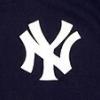





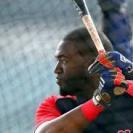
.thumb.png.aad86864e15cfc69f40c1da76dccd975.png)
